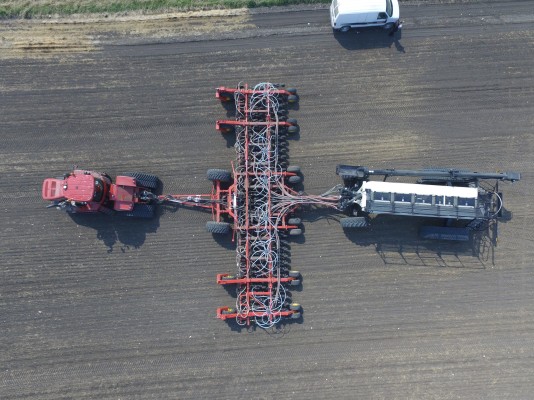It’s that time of year again where growers are brushing up on their agronomy to help increase yield, minimize costs and maximize ROI. One topic that many like to refresh on around this time is seeding rate.
Much research has been done and many articles written on seeding rates for canola. If you're looking to adjust seeding rates to save money, you need to be mindful of the trade-offs.
Right Seeding Rate, Right Plant Density
The research tells us that the magic number is 5 plants/ft² for minimum plant stand at harvest. Anything less will have a significant negative impact on yield but anything more, interestingly enough, won’t have the same negative consequences. In fact, higher seeding rates can lead to benefits – such as better emergence, better crop biomass, and fewer days to crop maturity. This is attributed to more uniform stands due to less compensatory branching that you’d get under thin stand conditions.
Growers who find themselves with smaller sized seed (i.e. 3.5g TSW), and are looking to minimize days to maturity, especially in more northern tier growing regions, can bump up their rates, expect an earlier harvest time and also reduce the cost from the traditional 5 lbs/ac recommendation. As an example, suppose a grower has smaller sized canola seed of 3g (TKW) and plays it smart by targeting a plant density of 9 plants/ft² instead of 5 plants/ft² (and assuming 60% seed survival). The grower would only be looking at a 4.3 lbs/ac seeding rate and so could expect a better ROI outcome.
Other benefits that have been observed with higher seeding rates are higher TSW and even higher oil content. To help realize these benefits, experts advise that your target plant population should be between 7-10 plants/ft² as a proper risk management strategy. This accounts for any plant mortality that may occur throughout the season, be this from the result of pest pressure, environmental factors or even challenging planting conditions. There does not appear to be a significant negative impact on yield when going over 10 plants/ft². At 14 plants/ft², the highest rate studied no negative impacts were observed.
Seed Size: Is Bigger Better?
A common perception is that bigger is better when it comes to seed size. Intuitively, this sounds right and the research does show some benefits, including better early season vigor to increase early crop competition. Larger seed size has even been correlated with better resilience to flea beetle damage due to the bigger shoot biomass having a better shot at recovery. Surprisingly though, when it comes to the important metric of impact on emergence and yield – the results are insignificant or inconclusive at best.
Some have observed an increase in emergence and yield with an increase in seed size of very small lots (i.e. from 2 to 4 g TSW), but for any seed size larger than that, no significant benefit related to emergence or yield has been observed. In fact, because these studies used bare rather than treated seed, one can argue that seed size of commercially available canola varieties has no impact on emergence or yield. It is all treated therefore the impact of flea beetles and other factors are greatly reduced. For those who do find themselves with larger sized seed who want to target a respectable plant density while being mindful of costs, the adjusted seeding rate wouldn’t be terribly higher than the traditional 5lbs/ac. For example, for a grower using a 5g TSW targeting 7 plants/ft² (and assuming 60% seed survival) they would be looking at 5.6 lbs/ac – not exactly a backbreaking amount.
There is some complexity when weighing the costs and benefits of going with one seeding rate and seed size over another. Based on what the research shows, unless you have really small sized seed, a good rule of thumb is to stick with the traditional recommendation of 5 lbs/ac. This simplifies things without the pressure of additional seed costs.
However if you do find yourself planting under challenging conditions (i.e. too dry, too deep, too wet, too cold etc.), it may pay to bump up rates to account for the additional plant mortality to ensure one achieves the 5 plants/ft² needed to preserve yield potential.
Sources:
Elliot, R. H., Franke, C. and Rakow, G.F.W.2008. Effects of seed size and seed weight on seedling establishment, vigour and tolerance of Argentine canola to flea beetles. Can J. Plant Sci. 88:207-217
Harker, K.N., O'Donovan, J.T., Smith, E.G., Johnson, E.N., Peng, G., Willenborg, C.J., Gulden, R.H., Mohr, R.M., Gill, K.S., and Grenkow, L.A. (2015). "Seed size and seeding rate effects on canola emergence, development, yield and seed weight.", Canadian Journal of Plant Science, 95(1), pp. 1-8. doi : 10.4141/cjps-2014-222



